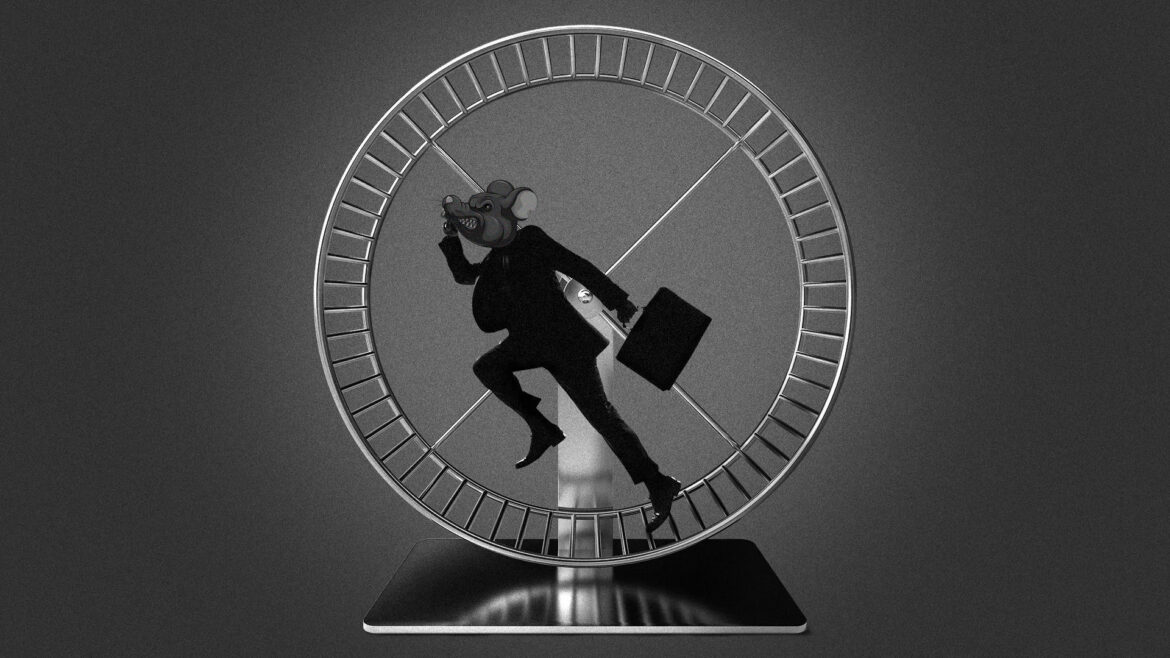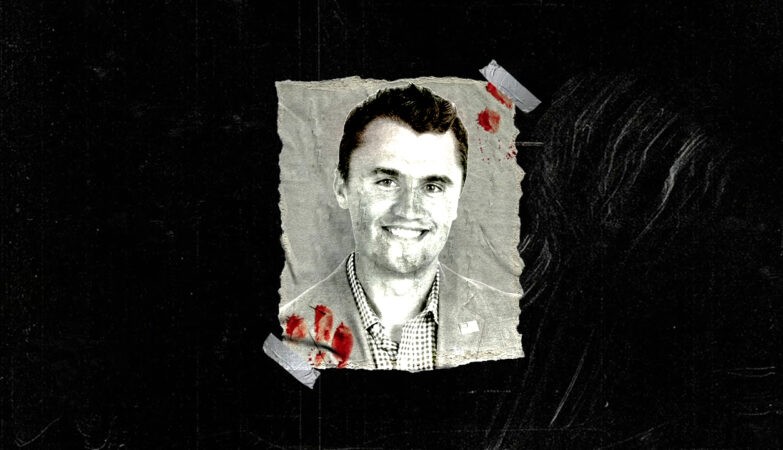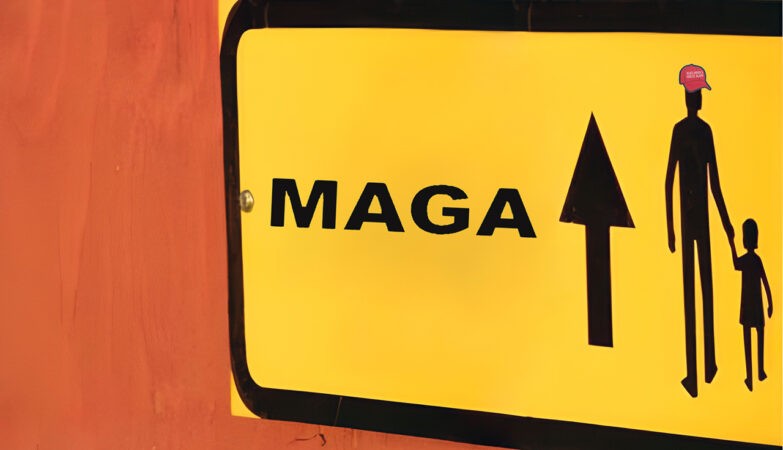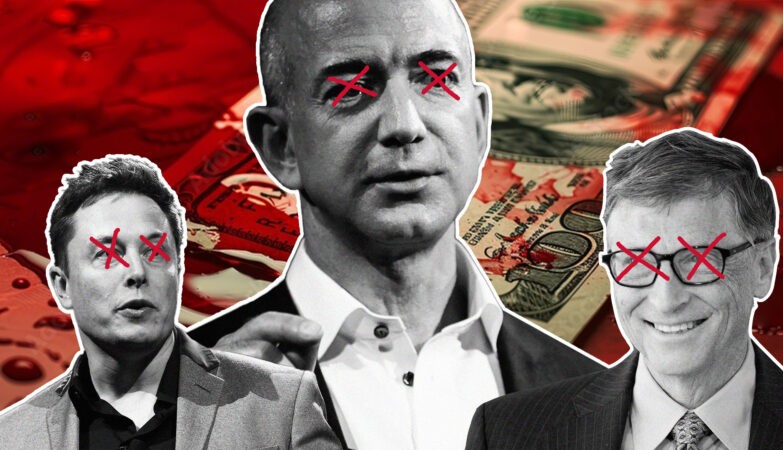A rather new kind of propaganda is sweeping through the lush halls of power, the feeds of social media, and even the lips of your nearest, dearest billionaire. Declining birth rates, they warn, are a harbinger of doom, a signal of cultural collapse, a death knell for “Western civilization.” And at the helm of this chorus of panic is none other than those such as the world’s current wealthiest man, Elon Musk, tweeting apocalyptic soundbites like “Population collapse is the biggest threat to civilization” or “If there aren’t enough people for Earth, there definitely won’t be enough for Mars!”.
Most of the stories dominating the news cycle have sensational, clickbait headlines: “Women in the U.S. Are Having Fewer Babies” (Time); “U.S. Fertility Rates Have Plummeted Into Uncharted Territory, and Nobody Knows Why” (Science Alert); “The U.S. Is in the Danger Zone for a ‘Demographic Time Bomb’” (Insider); and “Florida, U.S. Have a Baby Problem” (Orlando Sentinel). In some articles, women are being blamed as if it’s all immaculate conception — “Women Aren’t Having Enough Babies to Replace Ourselves” (Moms).
Naturally, this isn’t actually about humanity’s future. Not really. It’s more about preserving the current system — a system that depends on an ever-growing pool of workers, consumers, and taxpayers to fuel an unsustainable machine that grinds down everything in its path. Capitalism, as we know it, cannot survive without endless growth. It requires more people to buy more things, to pay more taxes, to fund pensions, and to fill the gaps in an economic model that prioritizes profit above all else. When Musk and his cringe buddies sound the alarm on declining birth rates, they aren’t mourning the loss of human potential or something like that. They’re just mourning the loss of cheap labor.
“The birth of every new child is also the birth of a new consumer.”
-Some billionaire
In fact, all of this news noise is missing the glaringly obvious facts that almost every millennial and zoomer I know recognizes immediately, which really brings in to question rather it is worth bringing another human being in to this world.
The U.S. Has the Highest Maternal Mortality Rate of All Developed Countries
When NPR and ProPublica investigated maternal mortality in the U.S., their findings were clear: “More American women are dying of pregnancy-related complications than any other developed country. Only in the U.S. has the rate of women who die been rising.”
Here, around 26 out of every 100,000 pregnant women die each year, and while some European and Eurasian countries have rates in the teens, the U.S. maternal mortality rate is rising while most other countries are seeing their rates decline. The U.K., for example, has a rate of around nine in every 100,000 women dying, but the Lancet noted that country’s efforts to reduce maternal mortality has meant “being pregnant in the U.K. has never been safer.” Not to mention that our rate remains three times greater and is increasing.
The lowest rates around the globe are three deaths per 100,000. Which means that compared with women in places like Finland, Iceland, and Greece, mothers in the U.S. are dying at a rate that’s nine times greater. That’s not even taking race into account. The CDC reports that black women in the U.S. are three to four times more likely to die from pregnancy-related causes as their white counterparts.
But it’s not just a higher risk of death here in the U.S. that makes birth difficult, it’s also a matter of cost.
Giving Birth in the U.S. Is Exceedingly Expensive
The United States is the most expensive place in the world to give birth. In the Guardian’s analysis, it costs around $32,000 to give birth vaginally in the U.S. if you don’t have insurance. If you require a C-section, those costs increase to around $51,000.
Think about that: Without insurance, it’s the financial equivalent of an extremely nice car or multiple years of tuition at a state university merely to have a baby. And that’s if everything goes well. If there are complications — either for the child or the mother — those costs can quickly escalate to six figures or more.
Say you’re lucky enough to have great insurance, though — despite the best efforts of some members in the House and Senate to get rid of protections for pre-existing conditions, of which pregnancy is one — even then, insurers only negotiate the cost down to around $10,000 for a vaginal birth. In Spain (which has the supposedly dreadful socialized medicine), it costs insurance companies a mere average $1,950 for women to give birth vaginally.
That’s not a matter of lower cost for less quality; Spain’s maternal mortality rate is five times lower than the U.S. So while pregnant women in the U.S. with insurance might be paying less out of pocket, the costs paid by their insurance companies are still astronomically high and are no doubt reclaimed by charging higher insurance rates.
What we have in the U.S. then, is — on top of a high mortality rate — the added burden of giving birth made to be ridiculously expensive. And once you have the baby, we’ve created a system that fails to take care of U.S. mothers further.
The U.S. Has No National Mandate for Paid Parental Leave
In another disappointing distinction, the United States remains just about the only industrialized country, and the only OECD member country, not to require paid parental leave. It’s up to the discretion of individual employers to decide whether or not to offer paid maternal or parental leave.
Governments in other countries provide weeks or even years with varying amounts of assured income to moms and, increasingly, dads. It’s a simple argument — as Christopher Ingram writes in the Washington Post:
“At the risk of stating the obvious, having kids is a necessary condition for our biological and economic survival. The species must perpetuate itself, and at the country level, if economic growth is to continue, it behooves couples to churn out as many future employees and taxpayers as possible.”
Not only is it more dangerous and more expensive to have a child in the United States, but even after that, we’re not going to provide parents with the financial security to ensure they can take time to be with their newborn. With these facts, is it really that shocking that we have a declining birth rate?
Even if you manage to get past all of this, there’s an additional financial burden that becomes a major factor in keeping people from having kids.
Child Care Can Cost as Much as Rent
Care.com’s latest annual survey, which factors in parents who use nannies as well as those who opt for daycare, put the national average of child care expenses at $1,500 per month, or $18,000 per year. That’s equivalent to a national-average rent payment, which Rent Cafe put at $1,405.
The U.S. Department of Health and Human Services says that child care is considered “affordable” if it costs no more than 10 percent of a family’s income. Using Care.com’s average of $18,000, that’d require a combined household income of $180,000. But the latest figures from the Census put the median household income at $61,372, meaning child care for the average family is likely closer to nearly 30 percent.
Contributing almost 30 percent of your household income to child care is untenable for many multi-income families, much less single-parent households. Especially considering the state of most people’s personal finances.
Wages Have Remained Nearly Stagnant for 40 Years
Pew Research found that “today’s real average wage (that is, the wage after accounting for inflation) has about the same purchasing power it did 40 years ago. And what wage gains there have been have mostly flowed to the highest-paid tier of workers.”
Using data compiled by the Bureau of Labor Statistics (BLS), LISEP calculated the median earnings of everyone who is employed or actively seeking employment. Thus, they took the median earnings of the whole U.S. labor force as defined by the BLS.
By comparison, the BLS headline numbers only include those who are employed at full-time jobs. If a low-income worker moves from full time to part time, or becomes unemployed, the BLS metric will report that earnings have risen, giving a false sense that earnings are getting better. TWE, on the other hand, gives policymakers access to a more comprehensive indicator of how the job market is performing as a whole.
As of Q1 2025, the calculated earnings nationwide were $52,026 annually, or right around $1,000 weekly. Of course, this number fluctuates up or down depending on where you live, job availability, and general cost of living.
This means that as the cost of living continues to skyrocket, wages aren’t keeping pace for most of us. This makes it all that much harder to afford both quality health care and quality child care. Plus, while wages have barely budged, our debt is crushing us.
We Are Struggling to Make Ends Meet Even Before Having Children
Our level of debt — which for many young people today is student loan debt — drastically outpaces any other generation before us, according to the Federal Reserve. Its most recent study flat out states that “millennials are less financially well-off than members of earlier generations when they were the same ages, with ‘lower earnings, fewer assets and less wealth.’”
If high maternal mortality rates, the high cost of having a baby plus the lack of guaranteed income after having that baby, and child care that costs a significant percentage of already stagnant wages for a generation that’s openly worse off financially than previous ones isn’t enough to evidence as to why the birth rate is decreasing, there’s one more factor to bring it home.
We Are Disillusioned and Burned Out
If you haven’t read Anne Helen Peterson’s brilliant piece on how millennials are the burnout generation, you really should. She explains how our parents raised us in relatively stable economic and political times and reared us with an eye to our hard-working futures with the belief we’d be even better off than they were. From purposeful play time to post-graduate school expectations, we have, as Peterson writes, “internalized the idea that [we] should be working all the time.” But we very rarely reach the dangling carrot. Saddled with the nation’s financial crisis on top of our own mountains of debt and the idea that we are failures if we stop, we are — quite simply — exhausted.
Now, I’m not saying that no one should have children. I have many friends who have amazing kids. But if you’re going to act shocked at why the birth rate is decreasing, or worse, try to analyze it while ignoring all of the above realities, then you’re doing everyone a disservice.
Let’s take a look at this from a different perspective, one related not only to the environment, but moral consciousness.
Overpopulation vs. Overconsumption
There’s a common counterargument that arises when discussing population growth: overpopulation isn’t the real problem; overconsumption is. And it’s true — wealthy nations consume the lion’s share of resources and emit the majority of greenhouse gases. The carbon footprint of a child born in the United States far outweighs that of a child born in an African or South-East Asian nation. But this argument, while valid, ignores a crucial point: both overpopulation and overconsumption are the problem.
The planet is finite. Its ecosystems are delicate, its resources limited. Adding billions more people to the mix, particularly as developing nations strive toward Western levels of consumption, isn’t just unsustainable — it’s catastrophic. We are already witnessing the strain: deforestation, water shortages, mass extinctions, and the slow-motion collapse of the systems that sustain life. Population growth, even in regions where per capita consumption is low, amplifies these pressures. Yes, we have to look at Western consumption first; also yes, adding more consumption is not a good thing.
According to the United Nations, the global population reached 8 billion in 2022 and is projected to peak at around 10.4 billion by the end of the century. Even at current levels, humanity is consuming around 1.7 times the Earth’s biocapacity annually. In simpler terms, we’re living on ecological credit, borrowing against a future that might not exist. Declining birth rates could be a lifeline — a chance to reduce humanity’s ecological footprint before it’s too late.
Crowded Planet
Even in places such as Austria, where the landscapes are dotted with villages and framed by majestic mountains, the pressure of overpopulation is palpable. The cities are teeming, the highways choked, the quiet corners of nature shrinking. On a sunny weekend, it feels like half the country descends upon the same lakes and hiking trails. And this is Austria — a relatively small, affluent country with a stable yet rising population. Now imagine the chaos in places like India, where overcrowding has reached apocalyptic levels.
Take the infamous viral videos of Indian trains, with passengers clinging to every surface, packed like sardines both inside and out. It’s a stark visual metaphor for a world pushed beyond its limits. In India, where the population exceeds 1.42 billion, the strain on infrastructure, resources, and basic human dignity is unbearable. And it’s not just India — countries across Africa and Southeast Asia face similar challenges, with rapid population growth compounding poverty, environmental degradation, and political instability. This all is not meant in a derogatory way whatsoever. No, it’s a daily fact and nightmare for millions and billions of people. (Check out the India subreddit for many, many examples of people trying to leave their homeland due to overpopulation.)
For those of us in more affluent nations, it’s easy to moralize about the importance of population growth while enjoying the comforts of stable systems. But the truth is, even here, the cracks are showing. The more people there are, the harder it becomes to ensure access to housing, healthcare, pensions, and just… space. The more we encroach on the natural world, the more we lose — not just in terms of biodiversity, but in terms of our own quality of life.
Fewer People, Better Lives
Declining birth rates are often framed as a harbinger of economic collapse. But what if they’re actually a pathway to a better future? Fewer people mean less strain on resources, less competition for jobs and housing, and more room for nature to thrive. It’s an opportunity to rethink how we structure our societies — not around the relentless pursuit of growth, but around the well-being of individuals and communities.
Before we even consider the need for more people, we should focus on making life better for those who, well, already exist. Across the globe, billions of people struggle to meet their basic needs: clean water, adequate food, shelter, and access to healthcare and education. In wealthy nations, inequality continues to rise, with a small elite hoarding wealth while millions live paycheck to paycheck. What sense does it make to bring more people into a world so fraught with suffering when we’ve yet to solve the problems we already face?
“No society can legitimately call itself civilized if a sick person is denied medical aid because of lack of means.”
— Aneurin Bevan
We should be pouring resources into building more egalitarian systems, reducing inequality, and ensuring that everyone — not just the privileged few — can live a life of dignity and purpose. A world where fewer people live better, more fulfilling lives is infinitely preferable to one where an ever-growing population fights over diminishing scraps in the heat-scorched dust bowls of this world. Declining birth rates offer us the breathing room to address these systemic issues, to create societies that prioritize human well-being over profit, and to reimagine what progress looks like.
Degrowth economics offers a vision of this future. By scaling back resource use and prioritizing sustainability over profits, we could create a world where fewer people live better lives. Imagine a society where the focus isn’t on maximizing output, but on maximizing happiness. A society where people work fewer hours, spend more time with loved ones, and live in relative harmony with the planet (if that’s even possible).
But here’s the catch: degrowth requires fewer people. It’s impossible to reduce humanity’s ecological footprint while adding billions more to the mix. Declining birth rates aren’t just compatible with a sustainable future — they’re essential to it.
A Personal Choice — and a Political One
For many people, the decision to have children is deeply personal. It’s about love, legacy, egotism, saving a failing marriage, and — sometimes — the hope for a better future. But in a world teetering on the edge of climate catastrophe, it’s also a political choice. Every new child represents a new strain on the planet — a new set of needs, desires, and emissions. For some, this realization is enough to tip the scales against parenthood.
But there’s another side to this story: the relentless pressures that make parenting increasingly unappealing. In many countries, the cost of raising a child has skyrocketed, while social safety nets have withered. Parenting, once a communal effort, has become an isolating, all-consuming job. And for what? To bring a child into a world where wildfires rage, oceans rise, and the very air we breathe grows toxic? (Talking to you, microplastics in my brain.)
It’s no wonder fewer people are choosing to have children. And instead of lamenting this trend, we should embrace it as a sign of progress — a sign that humanity is finally confronting the limits of its own existence. A primal biological reaction to worsening external factors perhaps? The more educated a populace, the fewer children they have — oh, why could that be?
An Opportunity for Change
The decline of birth rates isn’t the fall of civilization — it’s an opportunity to save it. To break free from all those hamster wheels. To build a future where fewer people live more fulfilling lives, in relative balance with the Earth and its ecosystems.
Perhaps those in high positions such as Elon Musk should take a moment to reconsider what they’re really advocating for when they bemoan declining birth rates. Is it truly about humanity’s future? Or is it about preserving the status quo?
Declining birth rates are not a crisis. They are a chance — a rare and fleeting opportunity to rethink what it means to be human. To leave behind the chaos of overpopulation and overconsumption and move toward a world that’s not just survivable, but — one dares dream — beautiful.
- https://beneaththepavement.substack.com/p/declining-birth-rates-are-a-good-thing
- https://gen.medium.com/everyones-missing-the-obvious-when-it-comes-to-the-declining-u-s-birth-rate-679abebb854b
- The New Right vs. the New Left - December 10, 2025
- Why the 11th Amendment Needs to Be Revoked - December 9, 2025
- When Will the AI Ponzi Scheme End? - December 8, 2025






















